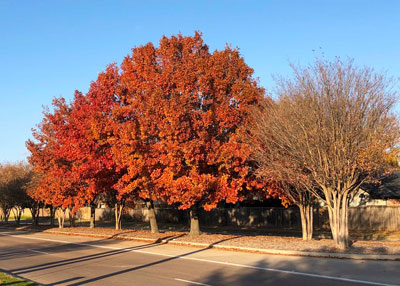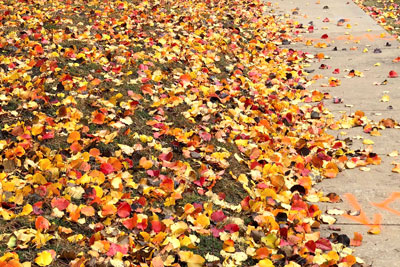Question of the Week: November 28, 2019

“Why do shade trees vary in the intensity of their fall color from one year to the next?”
It’s been interesting how many people have asked this question this year – even including my very own wife! It’s surprising in light of the early first freeze – and how really cold that freeze was. Many of our best fall color trees lost their leaves overnight.
However, for the brave few that persisted – trees like Shumard red oaks, ornamental pears, and a few others, the colors seemed to intensify.

Our state isn’t known for blazing fall foliage, but we do get a reasonable share in most years. In general terms here are factors that contribute to giving us the very best fall color in Texas:
• Tree species. You’ll almost always get great color out of Chinese pistachios (reds, burgundy, yellows and oranges), pears (reds, burgundy, yellows and oranges), ginkgoes (golden yellow) and, where they’re adapted (primarily in East Texas) sweet gums (reds, burgundy, yellows and oranges). You’ll never get good fall color out of bur oaks or pecans. In between, you’ll often get good color from crape myrtles and red oaks.
• Exposure to cold. Red and yellow pigments don’t show up unless you have gradually lowering temperatures. Warm falls don’t promote good fall color.
• Average or below-average moisture. Wet falls promote continued new growth. That comes at the expense of fall color.
• Nitrogen. If your shade trees are in turf areas where you’re applying high-nitrogen fertilizers in September and into October, again the trees may stay vegetative too long.
• And then he said with a wink, there are just some years that are better than others.
